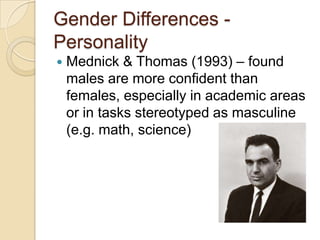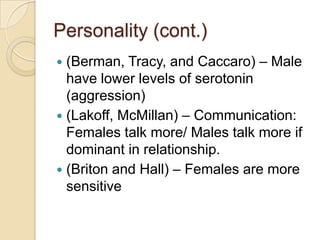This document discusses gender roles and differences. It defines key concepts like gender identity, gender stereotypes, androgyny, and gender schemas. It also examines research on gender differences in personality, cognitive ability, and the origins of gender differences. The research discussed includes studies finding differences in confidence, aggression, communication styles, and sensitivity between males and females. However, one study disproved common misconceptions about gender differences in verbal and math/spatial abilities. Theories discussed for the origins of gender differences include biological, psychoanalytical, social learning, and cognitive-developmental perspectives.










